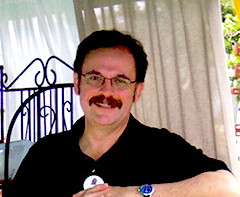The Rhythm of the Clay
by Tom Richards on 04/29/12
There is a rhythm to clay; it starts at the beginning when the clay is made. Adding the different ingredients into the mixer, sometimes slowly, sometimes quickly, letting the mixer mix - not forcing, just letting all the different components become one thing - the clay. Then letting the clay sit and rest, reinforcing the bonds the mixer created. Sometimes the clay will rest for days, weeks, months and sometimes for years - one generation making clay for the next.
Then there is the making of the pots. It does not matter whether it is done on the wheel or on the table top. There is a rhythm to the making. First the clay is wedged then it is portioned into the amounts needed for the wheel or the roller. And then the making begins.
The clay is slapped onto the wheel and centered, then the fingers open the centered mound to form a bowl or a cylinder, the walls of the pot are formed, the clay is brought up from the bottom to make the pot - taller, wider, bigger. The wheel speeds up and slows down, reinforcing the rhythm. The pot is taken of the wheel and set aside to become firm and dry. Once it has the desired firmness the excess clay is trimmed off revealing the desired form. Sometimes slip is applied to the pot to add color, texture or surface design - changing the rhythm depending on when it is added.
The clay is slammed onto the table top to form a thick slab - put through a slab roller to form a thin sheet or rolled with a rolling pin until the desired thickness is reached. It is then cut to size and pressed onto or into a form to create its basic shape or it is cut in strips or pieces that are then joined to create the pot. The pieces are stamped, scored, slashed, pierced, dashed with slip, impressed with odds and ends along the way to create texture that makes the pot what it is it is becoming. All of this done in the unique rhythm of that piece.
Then green ware - the soft bone dry pots are put into then kiln to be bisqued - the first firing that finalizes the form. The bisque kiln has its own rhythm - very slow at first, then faster - allowing the water to leave and the clay to shrink and become hard. And then the kiln is shut down and cooled down. Following the rhythm of the bisque firing.
Then there is the glazing - creating unity between the form and the surface - using slips and glazes - brushes, spray gun, dips and pours - the pot is ready to become complete in the glaze firing.
Whether it is fired with gas, electricity or wood - the glaze kiln also has its own rhythm. Slow at first - always slow at first - as the kiln builds heat - allowing the clay to shrink to its finale size and the glaze components to chemically change to create the finale color - oxygen is added or subtracted in rhythm and the heat is increased or decreased in rhythm to help create that glaze's finale color. The kiln is cooled in a rhythm - slow or fast completing the color, the surface the pot.
And then you start it all over again.
In the beginning I had a one person show called rhythm - the show was made up of early and current work. It was about me finding my rhythm with the clay - don't think too many got that - no one mentioned that.
I am still working on finding my rhythm.
